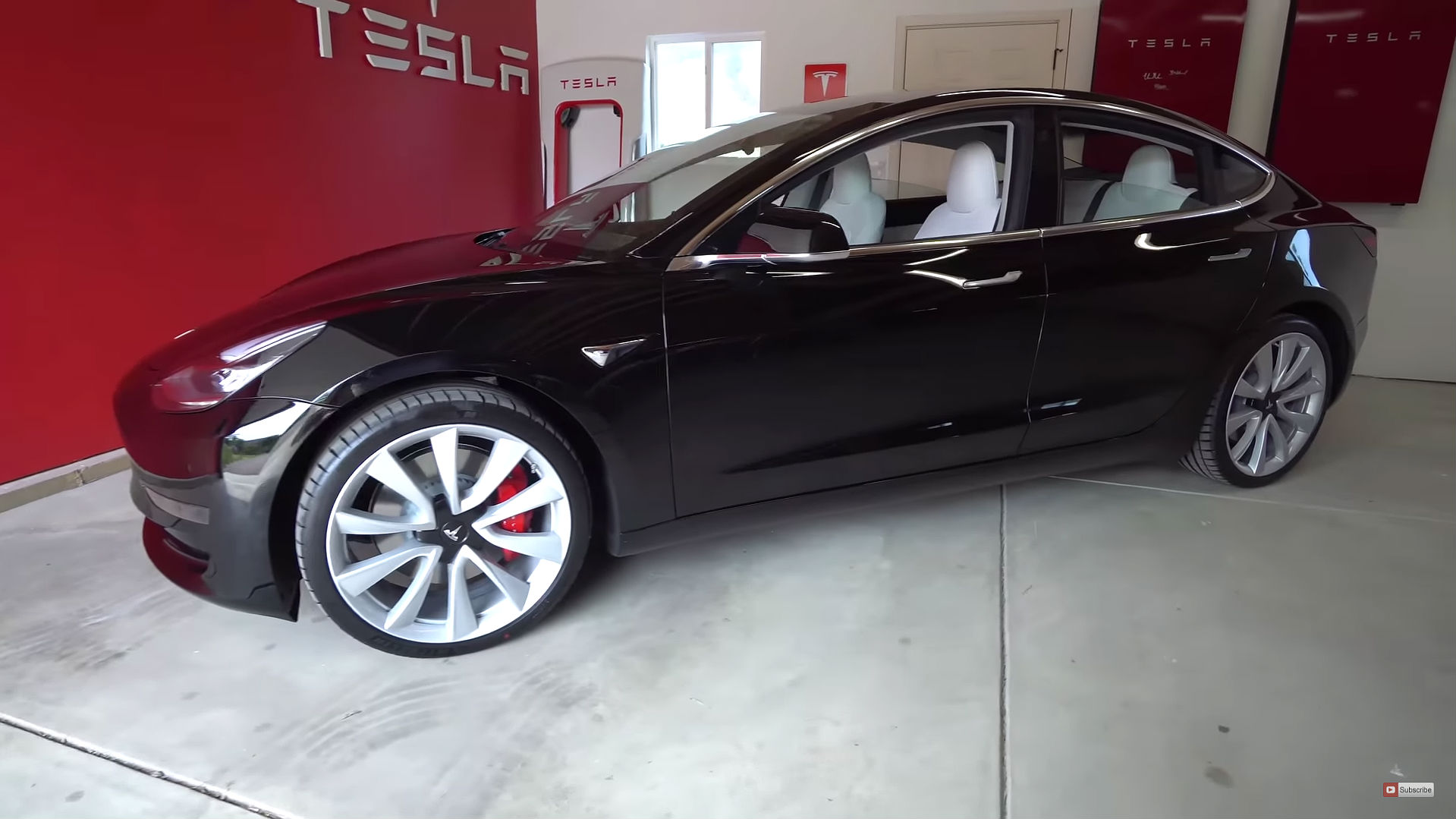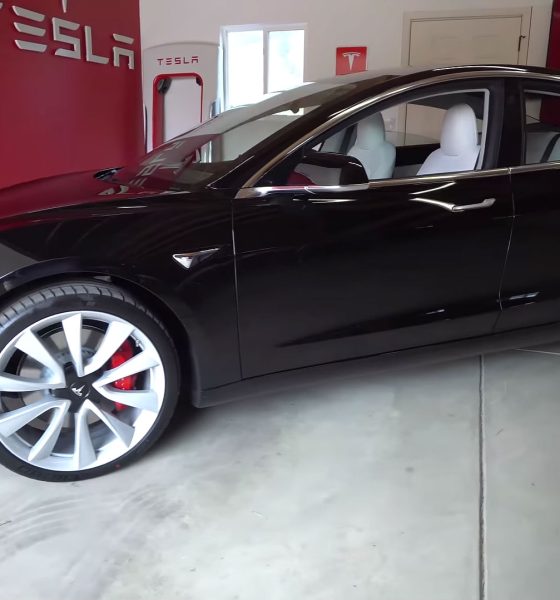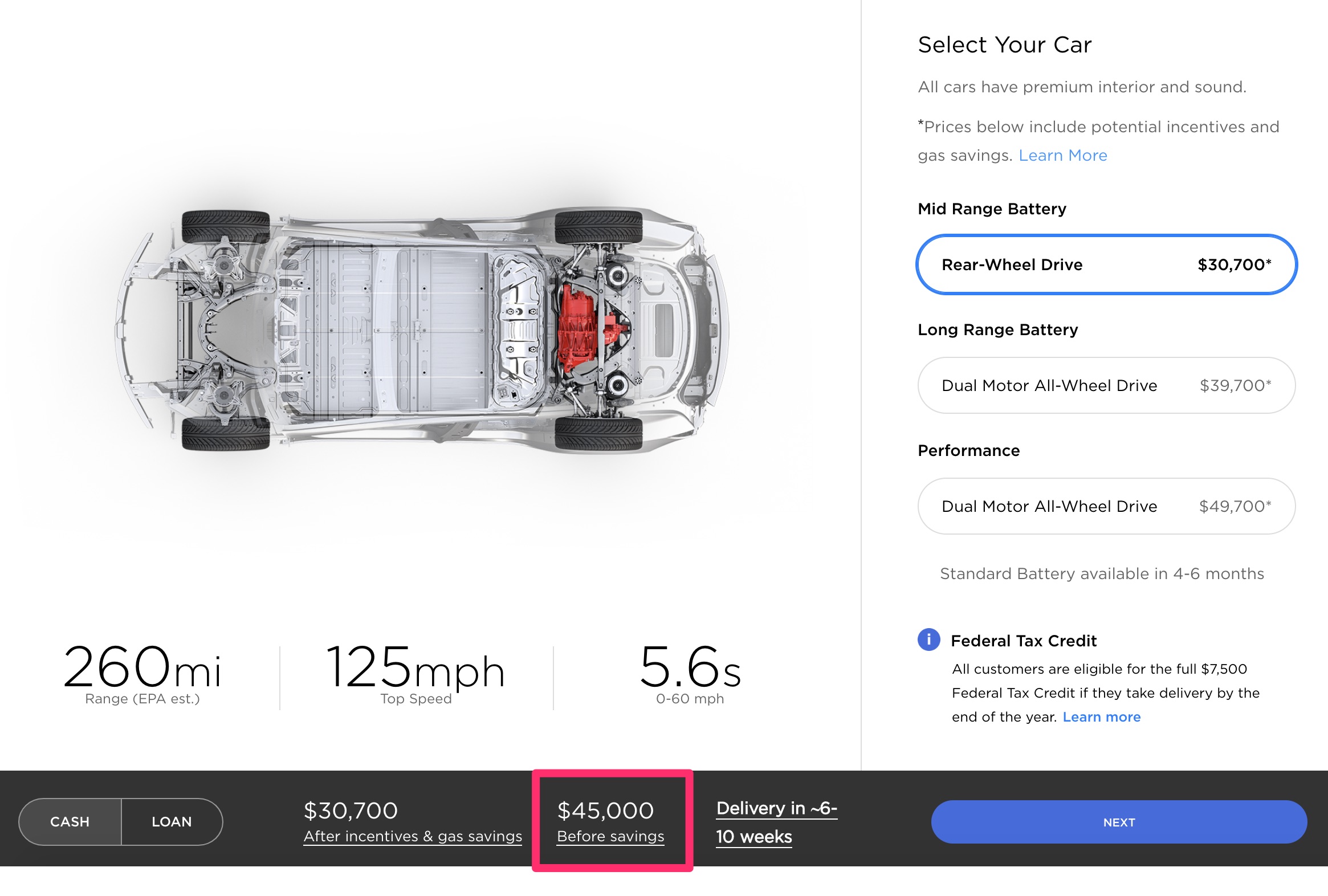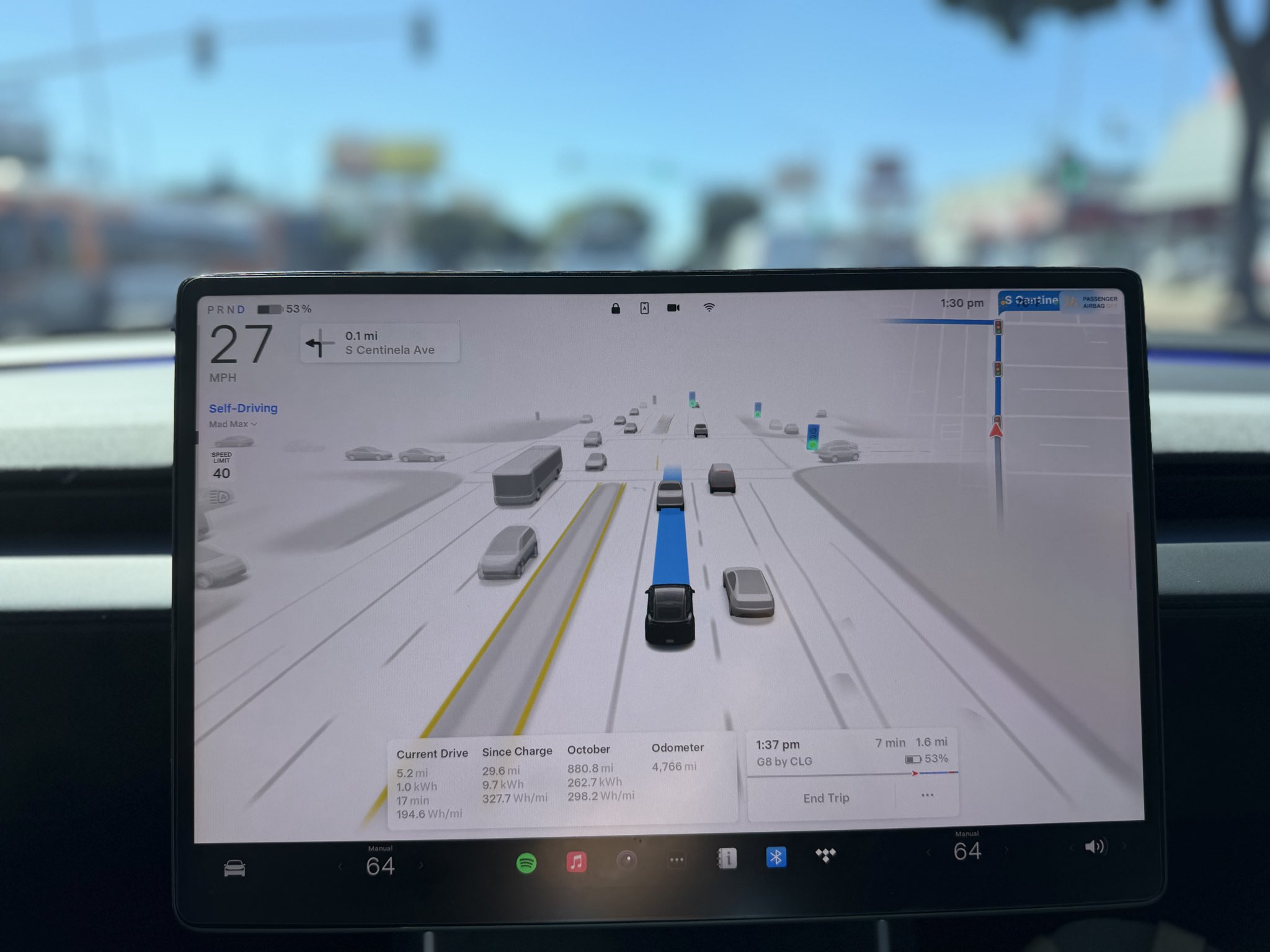

News
Tesla Model 3 Mid Range: $45k, 260-mile battery and rear wheel drive
No stranger to creating surprises (in 280 characters or less), Tesla CEO Elon Musk took to Twitter Thursday afternoon to announce that the company’s mass-market Model 3 sedan has been given a lower cost, Mid Range battery option that’s capable of 260 miles of range per single charge.
With a starting price of $45,000, the Model 3 Mid Range variant with rear wheel drive takes the Silicon Valley electric carmaker one step closer to offering the highly-anticipated $35,000 base version, which the company expects to produce in the first half of 2019.
Tesla’s first Model 3 variant, the 310-mile-capable Long Range version in a single motor, rear wheel drive configuration, will still be available for ordering directly through company sales representatives for another week, although the option has been removed from the Model 3 Design Studio.

The lower price for the Mid Range Model 3 represents a $4,000 savings from the Long Range rear wheel drive version that starts at $49,000 before incentives. However, this cost savings also equates to 50 miles less of driving range and reduced performance. 0-60 mph performance for the Mid Range Model 3 comes in at a modest 5.6 seconds versus 5.1 seconds for the Long Range version. Top speed for midrange Model 3 is also reduced to 125 mph (~200 kph).
Tesla Model 3 Version Comparisons
| 0-60 mph (sec) | Top Speed (mph) | Range (mi) | |
| Model 3 Mid Range (RWD) | 5.6 | 125 | 260 |
| Model 3 Long Range (RWD) | 5.1 | 140 | 310 |
| Model 3 Long Range (AWD) | 4.5 | 145 | 310 |
| Model 3 Performance (AWD) | 3.3 | 155 | 310 |
Elon Musk’s announcement of the lower-priced Tesla Model 3 should come as welcome news for the hundreds of thousands who have waited, some for more than two years, for the company to finally offer a truly affordable electric car that bests its competition in the luxury sedan market. At $45,000, the midrange Model 3 shares a similar base price as a 2019 BMW 330i series, yet tops the Bavarian heritage vehicle in both performance and technological innovation.
Arguably of more importance is Tesla’s strategic move to push higher-margin vehicles but also provide a favorable option for price-conscious consumers by creating a larger delineation between buyers looking to cost-cut and those seeking more range. By removing the RWD Long Range Model 3 as a vehicle selection, Tesla forces buyers that are looking for 310 miles of extended range to choose between a nearly $70,000 Model 3 Performance in basic trim or a $59,000 Model 3 Long Range with dual motor configuration. At a minimum, buyers looking for the long-range battery option will be spending $10,000 or more than they normally would have with the $49,000 RWD Long Range Model 3 as an available option.
According to the Tesla’s online configurator, buyers looking to purchase a Model 3 Mid Range can expect delivery in 6 to 10 weeks.
Model 3 long range, rear wheel drive is still available for ordering off menu for another week or so
— Elon Musk (@elonmusk) October 18, 2018

News
Tesla FSD Supervised ride-alongs in Europe begin in Italy, France, and Germany
The program allows the public to hop in as a non-driving observer to witness FSD navigate urban streets firsthand.

Tesla has kicked off passenger ride-alongs for Full Self-Driving (Supervised) in Italy, France and Germany. The program allows the public to hop in as a non-driving observer to witness FSD navigate urban streets firsthand.
The program, detailed on Tesla’s event pages, arrives ahead of a potential early 2026 Dutch regulatory approval that could unlock a potential EU-wide rollout for FSD.
Hands-Off Demos
Tesla’s ride-along invites participants to “ride along in the passenger seat to experience how it handles real-world traffic & the most stressful parts of daily driving, making the roads safer for all,” as per the company’s announcement on X through its official Tesla Europe & Middle East account.
Sign-ups via localized pages offer free slots through December, with Tesla teams piloting vehicles through city streets, roundabouts and highways.
“Be one of the first to experience Full Self-Driving (Supervised) from the passenger seat. Our team will take you along as a passenger and show you how Full Self-Driving (Supervised) works under real-world road conditions,” Tesla wrote. “Discover how it reacts to live traffic and masters the most stressful parts of driving to make the roads safer for you and others. Come join us to learn how we are moving closer to a fully autonomous future.”
Building trust towards an FSD Unsupervised rollout
Tesla’s FSD (Supervised) ride-alongs could be an effective tool to build trust and get regular car buyers and commuters used to the idea of vehicles driving themselves. By seating riders shotgun, Tesla could provide participants with a front row seat to the bleeding edge of consumer-grade driverless systems.
FSD (Supervised) has already been rolled out to several countries, such as the United States, Canada, Australia, New Zealand, and partially in China. So far, FSD (Supervised) has been received positively by drivers, as it really makes driving tasks and long trips significantly easier and more pleasant.
FSD is a key safety feature as well, which became all too evident when a Tesla driving on FSD was hit by what seemed to be a meteorite in Australia. The vehicle moved safely despite the impact, though the same would likely not be true had the car been driven manually.
News
Swedish union rep pissed that Tesla is working around a postal blockade they started
Tesla Sweden is now using dozens of private residences as a way to obtain license plates for its vehicles.

Two years into their postal blockade, Swedish unions are outraged that Tesla is still able to provide its customers’ vehicles with valid plates through various clever workarounds.
Seko chairman Gabriella Lavecchia called it “embarrassing” that the world’s largest EV maker, owned by CEO Elon Musk, refuses to simply roll over and accept the unions’ demands.
Unions shocked Tesla won’t just roll over and surrender
The postal unions’ blockade began in November 2023 when Seko and IF Metall-linked unions stopped all mail to Tesla sites to force a collective agreement. License plates for Tesla vehicles instantly became the perfect pressure point, as noted in a Dagens Arbete report.
Tesla responded by implementing initiatives to work around the blockades. A recent investigation from Arbetet revealed that Tesla Sweden is now using dozens of private residences, including one employee’s parents’ house in Trångsund and a customer-relations staffer’s home in Vårby, as a way to obtain license plates for its vehicles.
Seko chairman Gabriella Lavecchia is not pleased that Tesla Sweden is working around the unions’ efforts yet again. “It is embarrassing that one of the world’s largest car companies, owned by one of the world’s richest people, has sunk this low,” she told the outlet. “Unfortunately, it is completely frivolous that such a large company conducts business in this way.”
Two years on and plates are still being received
The Swedish Transport Agency has confirmed Tesla is still using several different workarounds to overcome the unions’ blockades.
As noted by DA, Tesla Sweden previously used different addresses to receive its license plates. At one point, the electric vehicle maker used addresses for car care shops. Tesla Sweden reportedly used this strategy in Östermalm in Stockholm, as well as in Norrköping and Gothenburg.
Another strategy that Tesla Sweden reportedly implemented involved replacement plates being ordered by private individuals when vehicles change hands from Tesla to car buyers. There have also been cases where the police have reportedly issued temporary plates to Tesla vehicles.
News
Czech Deputy excited for Tesla FSD, hints at Transport Committee review
The ANO party lawmaker shared his thoughts about FSD in a post on social media platform X.

Martin Kolovratník, a Czech Republic Chamber of Deputies member, has expressed his excitement for Tesla’s Full Self-Driving (FSD) after an apparent constituent called for a quick approval for the advanced safety system.
The ANO party lawmaker, who drives both diesel and EV, shared his thoughts about the matter in a post on social media platform X.
The official’s initial statements
Kolovratník kicked off the exchange with a post outlining his coalition’s efforts to scrap highway toll exemptions for electric vehicles and plug-ins starting in 2027.
“Times have changed. Electric vehicles are no longer a fringe technology, but a full-fledged part of operations. And if someone uses the highway network, they should follow the same rules as everyone else. That’s the basis of fairness,” he wrote.
He emphasized equity over ideology, noting his personal mix of diesel and electric driving. “For this reason, there is no reason to continue favoring one technology at the expense of another… It’s not about ideology, it’s about equal conditions. That’s why we clearly agreed within the new coalition: the exemption for electric vehicles and plug-ins will end in 2027. The decision is predictable, understandable, and economically sound.”
Tesla FSD enthusiasm
The conversation pivoted to Tesla’s FSD when X user @robotinreallife, who seems to be one of the official’s constituents, replied that other matters are more important than ending highway exemptions for EVs.
“I’m happy to pay for the highway, but I have a question about a much more fundamental matter: The Netherlands will approve the operation of Tesla FSD in February 26, a technology that has been proven to reduce accidents. The Czech Republic has the option to immediately recognize this certification. Do you plan to support this step so that we don’t unnecessarily delay?” the X user asked.
Kolovratník responded promptly, sharing his own excitement for the upcoming rollout of FSD. “I know about it. I like it and it seems interesting to me. Once we set up the committees and subcommittees, we’ll open it right away in that transport one. Thanks for the tip, I’ll deliver the report,” the official noted in his reply on X.
Kolovratník’s nod to FSD hints at the system’s potentially smooth rollout to Czechia in the coming year. With the Netherlands possibly greenlighting FSD (Supervised) in early 2026, Kolovratník’s commitment could accelerate cross-border certification, boosting FSD’s foray into Europe by a notable margin.









